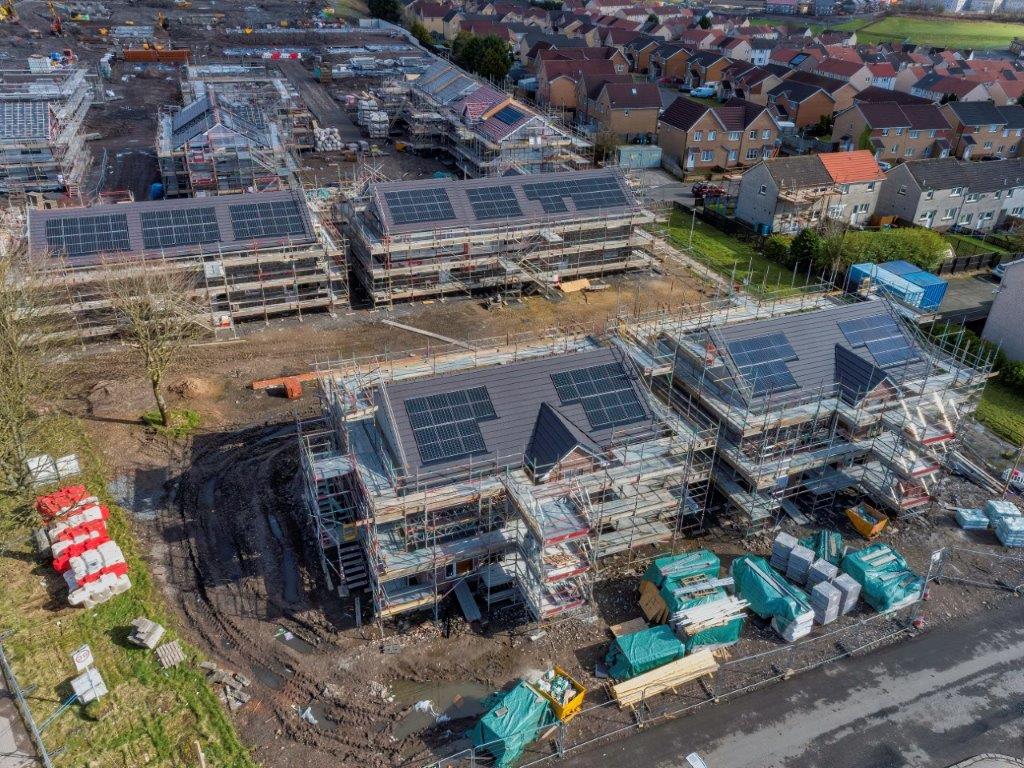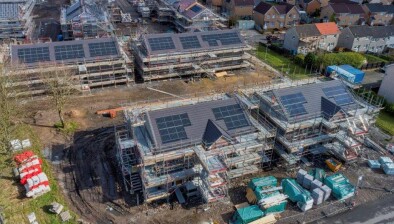Building a greener Scotland: Energy performance standards and the future of housebuilding

Eleni Diamantopoulou and Calum Raine from Womble Bond Dickinson delve into Scotland’s ambitious plans to enhance energy performance standards in housebuilding, aiming to create a more sustainable and environmentally friendly future.
The Scottish Government is implementing new energy performance standards within the next three years to advance decarbonisation in the housebuilding sector. If you are a landlord, contractor or developer, you need to know about new legislation that will require both existing and newly constructed private rented properties to comply with more stringent energy efficiency criteria.
The Buildings Sector is a key area of focus for the Scottish Government in the race to achieve ambitious net zero targets by 2050. The sector accounts for around one-fifth of the nation’s greenhouse gas emissions. Recent policy initiatives in Scotland indicate that significant transformation is underway, with energy performance standards playing a central role in decarbonising buildings. While owner-occupied homes and social housing have significantly improved in terms of energy efficiency, private-rented properties continue to lag behind. This is not surprising; about one third of private-rented properties in Scotland were built before 1919 making energy efficiency improvements increasingly challenging and costly.
Our recent build-to-rent report has also found that decarbonisation and sustainability matter for almost all developers. However, regulatory uncertainty remains the main obstacle in their efforts to make buildings sustainable in a cost-efficient way. We will explore below how recent developments in Scotland will address this obstacle and how they will impact those working in the Private Rented Sector (PRS).
Heat in Buildings Strategy – the guiding star
Despite its name, the Heat in Buildings Strategy outlines measures to decarbonise buildings beyond heating. The policy actions in the strategy seek to improve the energy efficiency of domestic, non-domestic, and public sector buildings. The actions also include delivering a Scottish equivalent to the Passivhaus standard. This is an international energy performance standard aiming to achieve thermal comfort (cooling or heating) through passive measures such as good insulation, airtightness, and good indoor quality. Passivhaus standard measures include triple glazing with insulated frames, impressive airtightness levels approximately 20 times stronger than in a standard build, mechanical ventilation with heat recovery system attached, and intelligent thermodynamic design.
Heat in Buildings Bill
The Heat in Buildings Bill (HiB) was consulted on last year. It will introduce a new ‘Heat in Buildings Standard’ (‘Standard’) that will require landlords of private rented homes to meet a minimum energy efficiency standard (MEES) by the end of 2028. The Standard will also require compliance with MEES for owner occupied properties. The Scottish Government committed in its 2025-2026 legislative programme to introduce HiB this autumn.
Draft Energy Efficiency (Domestic Private Rented Property) (Scotland) Regulations
The Scottish Government decided to progress regulations on MEES in PRS ahead of the introduction of HiB by using existing powers under the Energy Act 2011. In early June, the Scottish Government launched a consultation on the Draft Energy Efficiency (Domestic Private Rented Property) (Scotland) Regulations. The draft regulations are expected to be laid before the Scottish Parliament in early 2026 and apply from 2028.
The proposed regulations require all private rented homes to meet an Energy Performance Certificate (EPC) Heat Retention Rating (HRR, i.e., performance of the building’s fabric) of band C by 2028 for new tenancies and by 2033 for all tenancies.
The Scottish Government also plans to reform EPCs and will publish later in 2025 draft regulations introducing a new rating system applicable from autumn 2026. The reformed EPC will move away from ratings based on the costs to run a home and on carbon emissions intensity. Instead, it will provide three headline ratings based on the performance of the buildings fabric, the efficiency of running energy costs, and the efficiency and emissions’ intensity of the heating system. Meeting the new MEES will be measured against the reformed EPCs.
Property owners who fail to meet the required standard will not be able to let to a new tenant until they make the necessary energy efficiency improvements. However, the draft regulations detail several temporary exemptions to allow for flexibility and support to landowners, for example, when measures are technically unsuitable for the property. The list of exemptions includes lack of consent (from the current tenant or third parties), negative impacts on the fabric or structure of the property, temporary exemptions, for example, in the case of a change of property ownership and a costs’ cap . According to the latter, property owners will make improvements up to a maximum amount of £10,000 even if they don’t meet the standard.
The draft regulations include provisions for financial support to owners to achieve the new standard. The consultation seeks views on the form of the assistance.
Local authorities will be responsible for enforcing the new standard. In addition to the prohibition on letting the property, owners who fail to comply with MEES may face financial penalties of up to £30,000.
The final proposals will depend on the consultation feedback which closed on 29 August 2025.
Passivhaus Standard
Like MEES, the Scottish Government has progressed the implementation of an equivalent Passivhaus standard in the HiB through amending building regulations. Following a consultation that concluded last year, The Building (Procedure) (Scotland) Amendment Regulations 2024 were made on 10 December 2024, amending the Building (Scotland) Regulations 2004. The new legislation introduces a requirement for developers to provide two statements that will describe how the design and construction of a building complies with the mandatory standards for energy and environmental performance of schedule 5 of Building (Scotland) Regulations 2004:
a) an “energy and environmental design statement” with building warrant applications; and
b) an “energy and environmental construction statement” with each completion certificate.
The new regulations will apply as of 31 March 2028. The Scottish Government plans to consult on guidance on the format and content of each document in 2025.
In addition to these changes, the Scottish Government will publish a follow-up consultation document in early 2025 to outline the progress beyond the confirmed regulatory changes. It will focus on building design standards, and particularly the components and metrics of the Passivhaus approach. This analysis will guide the development of new performance targets and processes.
Who the changes affect and what they should do
The new energy efficiency standards are intended to improve private rented properties’ resilience to fuel poverty and climate extremes. Their implementation will affect landowners of existing properties, energy efficiency contractors and specialists, and developers of new build-to-rent properties in many ways. For example, properties that meet the current EPC Band C, may no longer comply with the metrics of the new standard when introduced.
Although the details of a financial support mechanism are still under development, the new proposals have improved significantly taking into consideration concerns on the implementation of the changes expressed in previous (and abandoned) consultations. Still, landowners of existing properties will face upfront costs to invest in insulation and energy-saving features compliant with MEES. However, the introduction of the cost cap seems to be striking a fair balance between the need to improve the efficiency of properties and the increasing and often financially unsustainable costs to upgrade them. If these costs are reasonable, they can potentially be offset through energy savings and improved market value of the property; a private rented tenement flat with good energy efficiency and therefore, lower utility bills will be likely to attract a higher rental income.
In addition, landowners must carefully assess their options for upgrades and exceptions. They need to work with accredited contractors and developers to flesh out the best solutions or risk fines and unlet properties.
Developers and contractors who install energy efficiency solutions or build new properties will be required to meet new, stricter standards through both MEES and the Passivhaus standard. They must assess their readiness to meet the new requirements and engage early with energy specialists to ensure works comply with the new standards.
The new standards will require skilled labour to carry out the improvements. The buildings sector workforce will need training and upskilling if they are to grasp the energy efficiency opportunities and deliver the housing and building stock improvements sought by the Scottish Government.








